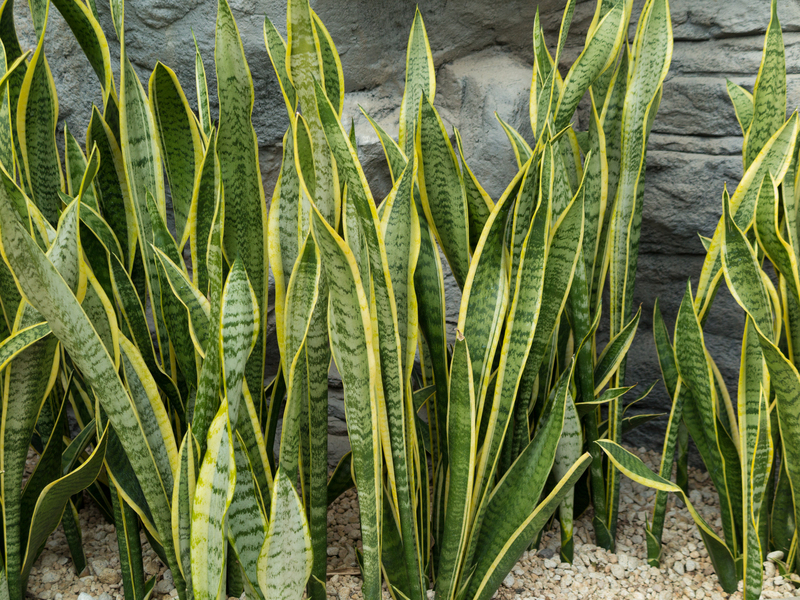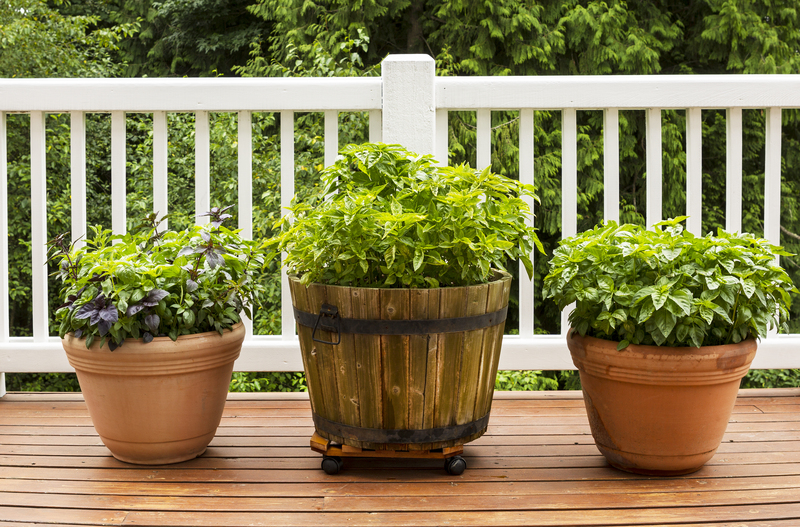Best Landscaping Approaches to Enhance Privacy in Any Yard
Looking to create a secluded sanctuary right outside your doorstep? Whether your outdoor space is a small urban backyard, a sprawling suburban lawn, or a cozy patio, landscaping for privacy transforms any yard into a refuge from prying eyes and noise. Discover the best landscaping approaches to enhance privacy that combine natural beauty with effective screening, allowing you to relax and unwind in comfort.
Why Is Privacy Important in Your Outdoor Space?
A private outdoor area isn't just about distancing yourself from neighbors--it's about creating a safe, peaceful oasis for relaxation, play, and entertaining. Enhancing privacy in your yard increases its usability, adds value to your home, and can even improve your mental health by providing a tranquil escape. Landscaping for privacy is a smart, long-term investment that pays off in beauty and utility.

Popular Landscaping Techniques for Privacy
There is no one-size-fits-all solution to achieving yard privacy. The best privacy landscaping techniques combine both natural and constructed elements, offering aesthetic appeal alongside practical screening. Here are the leading landscaping ideas to maximize privacy in any yard:
- Living privacy screens using trees, shrubs, and hedges
- Strategic fencing and walls
- Vertical gardens and trellises
- Outdoor structures such as pergolas and gazebos
- Layered planting for enhanced seclusion and visual depth
- Natural berms and mounds
- Water features to muffle noise and increase tranquility
1. Living Privacy Screens: Trees, Shrubs, and Hedges
Why Choose Green Privacy Barriers?
Natural screening is both beautiful and environmentally friendly. Trees, shrubs, and hedges not only shield you from view but also absorb sound, provide habitat for wildlife, and improve air quality. Living screens can be tailored to fit any style--formal or informal, lush or low-maintenance.
Best Plants for Living Privacy Screens
- Evergreens: Year-round coverage makes arborvitae, holly, boxwood, and juniper popular choices.
- Deciduous shrubs: Privet, forsythia, and lilac provide privacy in spring and summer with vibrant color and lush leaves.
- Fast-growing options: Bamboo and leyland cypress offer quick results but require regular maintenance.
- Flowering hedges: Roses, hydrangeas, and oleanders add color and fragrance to your privacy landscaping.
Tips for Planting a Privacy Hedge
- Check mature height and spread to ensure your plants offer sufficient coverage.
- Stagger plantings to avoid gaps and create a denser screen.
- Mulch regularly and provide adequate water, especially in the first few years.
- Prune for shape and thickness as your hedge matures.
2. Strategic Use of Fencing and Walls
Combining Structure with Style
When immediate privacy is needed, installing a fence or wall is one of the quickest solutions. These hardscaping approaches work especially well in smaller yards, where space is at a premium. You can also combine barriers with plantings for a seamless, natural look.
Popular Fence Materials for Privacy
- Wood: Classic, versatile, and easy to customize with paint or stain
- Vinyl: Durable, low-maintenance, available in various styles
- Metal: Decorative iron or aluminum panels provide partial privacy and ornate designs
- Masonry walls: Brick, stone, or concrete block for maximum blocking power
- Bamboo screens: Eco-friendly and visually striking for exotic or tropical themes
Fencing Privacy Ideas
- Install staggered slat fences for airflow and a modern aesthetic
- Integrate latticework with climbing vines for partial privacy and greenery
- Use combination fences like stone-on-bottom with wood panels above for style and substance
3. Vertical Gardens, Trellises, and Living Walls
Vertical gardening is a fantastic solution for smaller spaces or where property lines don't allow heavy fences. It maximizes privacy, adds interest, and is perfect for urban settings.
- Construct wooden or metal trellises and train fast-growing vines like clematis, ivy, or wisteria for lush green walls.
- Install modular living wall systems for a cutting-edge, eco-friendly privacy solution that also insulates buildings.
- Experiment with container gardens arranged on shelves or hanging from fences for adaptable, colorful screening.
Top Vertical Plants for Privacy
- Virginia creeper
- Climbing hydrangea
- Passionflower
- Trumpet vine
4. Outdoor Structures: Pergolas, Arbors, and Gazebos
Not only do outdoor structures delineate private areas, but they also create cozy outdoor rooms. A well-placed pergola, porch, or arbor can give you both shade and privacy while blending beautifully with the landscape.
Ideas to Increase Privacy with Structures
- Grow climbing plants over a pergola or trellis to form a living canopy
- Add outdoor curtains or screens for flexible, movable privacy
- Position furniture thoughtfully to shield specific seating or dining areas from view
5. Layered Plantings for Ultimate Seclusion
One of the best landscaping strategies for privacy is layered planting. Combining trees, shrubs, perennials, and groundcovers offers superior screening, depth, and year-round interest. Layered planting mimics nature, and the variety confuses the eye, maximizing seclusion.
How to Create a Layered Privacy Border
- Start with tall trees in the back for height and shade.
- Add mid-size shrubs for dense foliage.
- Fill in with flowering plants and grasses in front for color and movement.
- Use groundcovers like hostas or creeping thyme for a finished look.
6. Natural Berms and Mounds
Adding gentle hills or mounds (berms) to your landscape can break up sightlines, establish boundaries, and reduce noise. Berms are especially effective where fencing is impractical or local codes restrict tall barriers.
- Mound up soil along property lines and cover with turf, groundcovers, or ornamental grasses for natural privacy.
- Integrate planting beds atop berms for an even taller screen.
- Combine berms with fencing or hedges for extra height and intrigue.
7. Water Features - Privacy Through Sound and Motion
While water features don't physically block views, they are a unique privacy strategy that distracts from conversations and muffles urban noise. The gentle sound of running water increases a sense of seclusion and calm.
- Install a fountain or waterfall near patios for white noise and tranquility.
- Add a pond with tall plantings or rocks for partial screening and wildlife interest.
Choosing the Right Privacy Solution for Your Yard
Selecting the best landscaping approach for privacy depends on several factors:
- Size and layout of your yard--large spaces can support layered plantings or broad hedgerows, while small yards benefit from vertical solutions or fences.
- Sun exposure and climate--choose plants that thrive in your local conditions and offer year-round screening.
- Time and budget--some methods (like fencing) provide instant results, while living screens take several years to mature.
- Aesthetic goals--make sure your privacy features complement your outdoor decor and personal style.
DIY vs. Professional Privacy Landscaping
Many privacy landscaping ideas can be accomplished by DIY gardeners, such as planting hedges, container screening, or installing trellises. However, for complex sites, large berms, or custom structures, hiring a landscape architect or contractor may ensure proper installation and plant selection.
Maintenance Tips for Long-Lasting Privacy
- Prune and trim living screens regularly to encourage dense growth and prevent legginess.
- Check fence posts and hardware annually to maintain stability and appearance.
- Monitor irrigation--young hedges and trees need regular watering until established.
- Replace mulch each year to suppress weeds and retain moisture around plantings.
- Clean outdoor structures as needed to prevent mold, mildew, and weathering.
Combining Privacy Approaches for Best Results
The most effective yard privacy solutions often combine several of these strategies. Pairing living screens with fences, using both vertical and layered plantings, or integrating berms and water features, brings depth, beauty, and robust seclusion to any landscape.

Frequently Asked Questions About Privacy Landscaping
What is the fastest way to create privacy in my yard?
Installing a privacy fence or using fast-growing hedges like arborvitae or bamboo offers rapid results. Adding hanging screens or outdoor curtains is an immediate, flexible solution for patios or decks.
Which plants grow quickly for privacy?
How do I make a private area in a small yard?
Maximize vertical screening with trellises, wall planters, or tall container gardens. Consider decorative fences or panels, and use outdoor textiles for moveable privacy options.
What are maintenance challenges for privacy landscaping?
Living screens require regular pruning, watering, and pest management. Fences and structures need periodic cleaning and repairs to stay effective and attractive.
Conclusion: Creating Your Own Private Haven
Investing time and creativity into landscaping for privacy rewards you with a peaceful, functional, and beautiful backyard retreat. From lush hedges to stylish fences, layered plantings to water features, there are countless landscaping ideas for privacy to fit any yard size or style. Start with one or two approaches, then customize as your needs and outdoor living spaces evolve.
Remember, the best landscaping approaches to enhance privacy are those that harmonize with your home and nature while providing the seclusion you seek. Explore your options, experiment with combinations, and enjoy your outdoor oasis all year long!